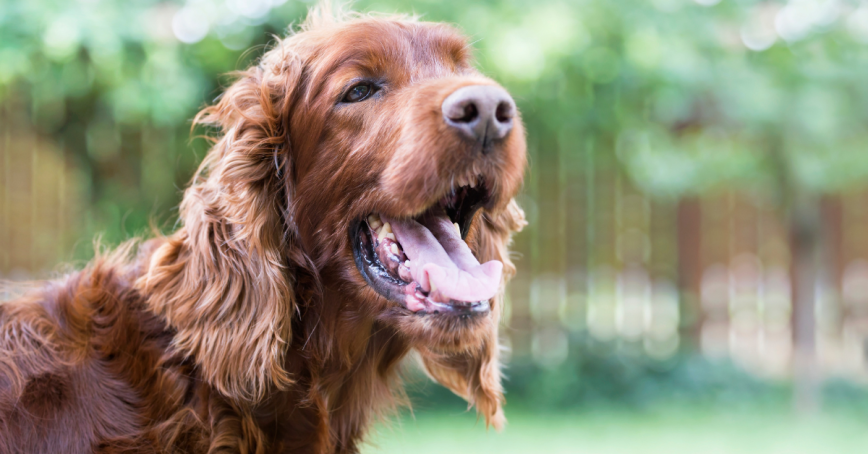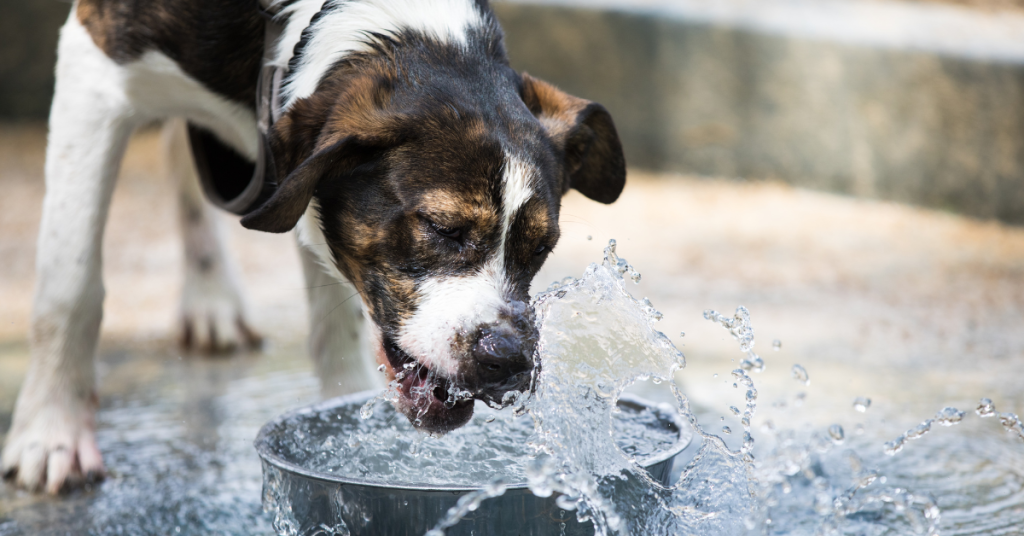Hot dog!…Did someone say walk?

Royal Roads guest columnist Cheryl Feldstein is a Bachelor of Arts in Interdisciplinary Studies student. She has worked most of her adult life in the non-profit sector, including 19 years with WILDNorth Northern Alberta Wildlife Rescue and Rehabilitation and recently joined the Edmonton Humane Society as a communications officer. Read more about her research to understand why people take selfies with wild (potentially dangerous) animals.
The floor is lava!
Well, maybe not. But as BC continues to experience unseasonably high temperatures, the pavement feels like it to our four-legged friends.
Thanks to climate change, extreme heat is becoming a summer norm that is not only is dangerous for our health, but for our dogs too.
You probably know that leaving dogs in vehicles on a warm day puts them at risk for heatstroke. But did you know heatstroke can also happen during a dog walk?

Thanks to climate change, extreme heat is becoming a summer norm that is not only is dangerous for our health, but for our dogs too.
Walks? I love walks!
Most of us can’t say the word “walk” to our dogs without a flurry of excitement, while they rush to be the first out the door and down the street.
Walks are one of the best ways to bond with your dog, but when it is hot, exercise can be too much for them. In fact, exercising your dog in hot weather can be just as dangerous as leaving them in a hot car.
During peak hours, the sun heats up pavement which can burn your furry side-kick’s paw pads. A good tip is to always touch the pavement to test the temperature before setting out on your canine adventure.
Heat and humidity affects all breeds of dogs, but older dogs, dogs that are overweight or have medical conditions and dogs with thicker coats and/or short noses like bulldogs, shih-tzus and pugs are at a higher risk for heatstroke*.
Planning walks during the coolest part of the day (early morning or evening) and adjusting your walk length, helps to ensure your dog gets exercise, while avoiding heatstroke.

During peak hours, the sun heats up pavement which can burn your furry side-kick’s paw pads. A good tip is to always touch the pavement to test the temperature before setting out on your canine adventure.
Too hot for a walk, now what?
Creativity is the key to finding safe activities to keep your dog busy during extreme heat. And when planning your activity, always remember your dog loves to do anything you are doing, because it is with you. Here are some ideas:
- Fresh water to drink (no ice), playing in a plastic kid pool or a game of indoor fetch are all great activities for your dog when temperatures soar.
- Puzzle toys are a hit or stuff a hollow toy with peanut butter or plain yogurt and freeze it for a cool treat.
- Thinking about teaching your dog a new trick for that upcoming community talent show? Now is the time to practice and perfect the art!
- Not cutting it? How about taking your dog to a pet friendly, air-conditioned store to walk around?
Signs of heatstroke*
- Heavy panting or rapid breathing
- Elevated heart rate
- High body temperature
- Glassy eyes
- Red or purple gums or tongue
- Excessive drooling
- Balance loss, disorientation or seizures
- Vomiting, diarrhea
*Always contact your veterinarian with any concerns

Celebrate International Dog Day on August 26 by visiting campus on-leash trails with your dog in (weather permitting).